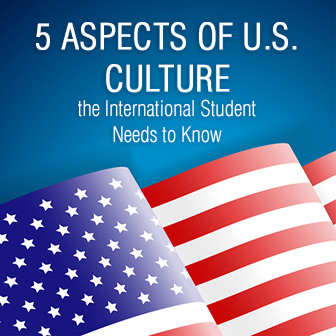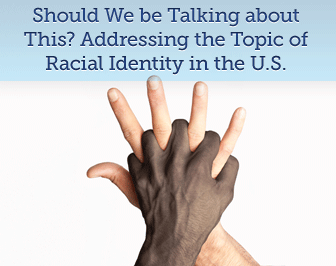5 Aspects of U.S. Culture the International Student Needs to Know


Delve very far into U.S. history, and you come up against segregation, slavery, the treatment of Native Americans, and the “evacuation” of Japanese Americans from the West Coast during World War II. The current public dialogue is dominated by issues of immigration, affirmative action, and our first nonwhite President. And delving very far into these topics will take you inevitably such questions as “Who are Native Americans? Who are Japanese Americans and African Americans?” The answers to these questions are muddy, as the issue itself is. Just as an example, I shared an office with a colleague for most of a year before I realized he was African American, and that was only after he mentioned having gone to Howard University, a historically black college. This kind of experience is not unique—first because race is a cultural, not biological, designation, and someone seen as “black” in the U.S. wouldn’t necessarily be in another country. The other reason is because we don’t talk about it—I would never, and most Americans would never, raise the issue of my colleague’s race, of course, unless he himself brought it up. In many areas of American discourse race is a taboo topic. So why talk about it at all?

Practical reasons. Students have to fill out forms. Many official forms ask students to note their race. It’s not uncommon for me to have a student tell me she really doesn’t know which “box to check,” or which category to put herself in, on these forms. She should know, even if it is to check “other” because none of the categories quite describe her.
It is part of our history: our only civil war was in part fought over race. Anyone addressing U.S. history who does not mention race relations has not dealt honestly with the topic.
It is a part of our literature: from The Adventures of Huckleberry Finn to more recent works such as The Help, about white women and their relationships with their African American maids in the Pre-Civil Rights South, race permeates American literature.
Bias. Often students hold biases that are based on misinformation, such as beliefs about minorities and their supposed criminal tendencies. Just discussing the topic can sometimes clear things up for the student.
“Taboo” Topic. The topic is “taboo,” but does that mean it’s never addressed? One class I taught turned into a discussion about what to do when people make ethnic jokes in your presence because that had recently happened to a student. Race is part of the public dialogue, although officially it isn’t, and students should have some idea of how to respond to it.

Use yourself as an example if possible. I have opened the discussion by offering myself as an example, so students are not put on the spot. I have asked students what race they see me as: most quite readily respond “white,” and I reply that is indeed the box I check, how most of the society sees me. Had I lived about fifty years ago, however, this would not be true because I am Jewish, and Jews in both Europe and the U.S., throughout most of their history were seen as “not white” but some other race. This has also been true of Italian and Irish people at various times—people seen today for the most part as indisputably “white.” This raises the issue that race is cultural, not genetic, and is based on how society sees one and how one self-identities. Students often enter the dialogue about their own racial identities.
Use examples of prominent people. President Obama is also a good example of the notion of race as not fixed but more a matter of public and personal identity. Obama identifies as black, he has publicly said, and that is how most Americans see him. However, because he is actually biracial, in some cultures such as Brazil that recognize biracial as a category, he would be seen more in that category.
Show a film on the topic. Many films address the issue of race. One I’ve had success with showing parts from is The Human Stain, about the relationship between an elderly college professor, played by Anthony Hopkins, and a cleaning woman, played by Nicole Kidman. It is based on a novel by Philip Roth about Coleman Silk, the professor, who most of his adult life has been successfully “passing” as white and Jewish, while actually he was born into an African American family and brought up as such. The film raises the issue of how permeable race really is: “passing” must have been a relatively common phenomenon, given there was a special term for it. It also raises questions about why someone would choose to “pass”: Silk had to give up his heritage and deny his family in order to pull this deception off. Why would someone feel compelled to do that? What does it say about our society? Silk made this choice about fifty years ago, but do people still make similar decisions today: do people still “pass,” perhaps in less drastic ways?
Case Studies. Although it’s taboo, the topic of race still comes up frequently in the U.S.—perhaps precisely because it’s taboo, it probably isn’t far from many people’s thoughts and leaks out into their words. Discuss, through case studies: for example, two men in a coffee shop sitting next to Mary begin making jokes about people of her heritage. Should she say something? Walk out? Do nothing? Someone at a party asks Joseph “what kind” of name his family name is. John finds the question intrusive. What should he do?
Students should learn to discuss it in a courteous manner.